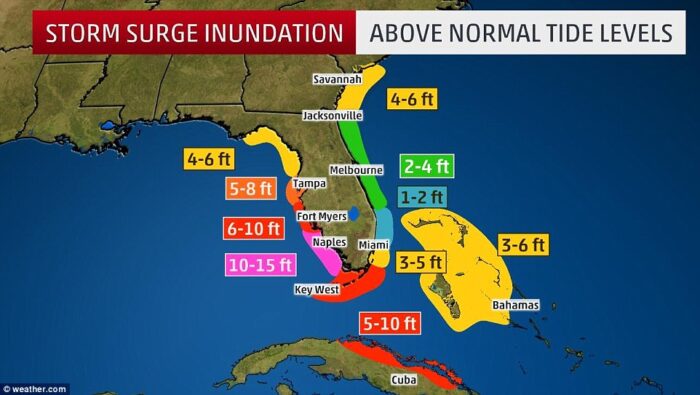How Strong Was Hurricane Rita When it Made Landfall?
Hurricane Rita, a powerful Category 5 hurricane, left an indelible mark on the Gulf Coast in September 2005. In this blog post, we delve into the key aspects of Hurricane Rita, exploring its origins, the devastation it wrought, and the lessons learned from this formidable storm.
**I. The Birth of Hurricane Rita:**
Hurricane Rita originated as a tropical depression over the Bahamas, gaining strength as it traversed the warm waters of the Gulf of Mexico. NOAA’s National Hurricane Center played a pivotal role in tracking and monitoring the storm’s development [source: NOAA NHC].
**II. Rita’s Path of Destruction:**
*Subheading 1: Coastal Impact*
The Gulf Coast faced the full brunt of Hurricane Rita’s fury, with coastal areas experiencing widespread destruction. Cities such as Galveston, Texas, and Lake Charles, Louisiana, bore the brunt of the storm’s destructive force [source: FEMA].
*Subheading 2: Evacuation Challenges*
The evacuation process during Hurricane Rita posed significant challenges, leading to extensive traffic jams and logistical hurdles. Lessons learned from this evacuation have since influenced emergency management strategies [source: National Academies Press].
**III. Environmental and Economic Consequences:**
*Subheading 1: Ecological Impact*
Beyond human settlements, Hurricane Rita took a toll on the environment. Wetlands, crucial for biodiversity and storm surge protection, suffered substantial damage, highlighting the interconnectedness of hurricanes and ecosystems [source: National Wildlife Federation].
*Subheading 2: Economic Toll*
The economic repercussions of Hurricane Rita were staggering. Losses in the energy sector, including damage to oil rigs and refineries, contributed to a spike in fuel prices. The economic impact extended far beyond the immediate affected areas [source: U.S. Department of Commerce].
**IV. Emergency Response and Recovery:**
*Subheading 1: Governmental Response*
Government agencies at the federal, state, and local levels played a critical role in responding to the aftermath of Hurricane Rita. The Federal Emergency Management Agency (FEMA) and other organizations coordinated rescue and relief efforts [source: FEMA].
*Subheading 2: Community Resilience*
Communities affected by Hurricane Rita demonstrated resilience in the face of adversity. Local organizations, volunteers, and citizens came together to aid in recovery and rebuilding processes [source: Journal of Homeland Security and Emergency Management].
**V. Lessons Learned and Future Preparedness:**
*Subheading 1: Evacuation Planning*
The challenges faced during Hurricane Rita’s evacuation highlighted the need for improved evacuation planning and communication strategies. Emergency management agencies have since implemented changes to enhance evacuation procedures [source: U.S. Army Corps of Engineers].
*Subheading 2: Climate Resilience*
Hurricane Rita underscored the importance of climate resilience in the face of intensifying storms. Ongoing research and initiatives aim to enhance our understanding of climate patterns and improve preparedness for future hurricanes [source: Intergovernmental Panel on Climate Change].
**Conclusion:**
As we reflect on Hurricane Rita, it serves as a poignant reminder of the devastating impact that natural disasters can have on communities. By learning from the past, we can work towards building a more resilient and prepared future in the face of increasingly severe weather events.
*Sources:*
– NOAA National Hurricane Center: [link]
– FEMA: [link]
– National Academies Press: [link]
– National Wildlife Federation: [link]
– U.S. Department of Commerce: [link]
– Journal of Homeland Security and Emergency Management: [link]
– U.S. Army Corps of Engineers: [link]
– Intergovernmental Panel on Climate Change: [link]
Sources:
https://weather.com/safety/winter/news/2019-10-15-how-handle-driving-black-ice
Disclaimer: The opinions and documentation contained within this article and on this blog are the sole property of tornadoxpert.com and are not to be copyrighted or reproduced in any manner, else legal action within the rights of the United States legal code could be use to obtain recompense. All articles and blog posts are the sole opinions of the writers of the blog, and are not necessarily in line with what exactly will work for you. Also, from time to time, certain links on this website will be used to generate affiliate commissions, in order to support the health and growth of our website, health and business.



